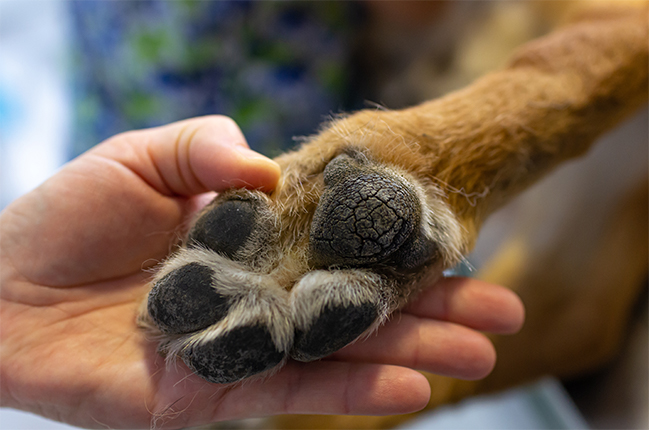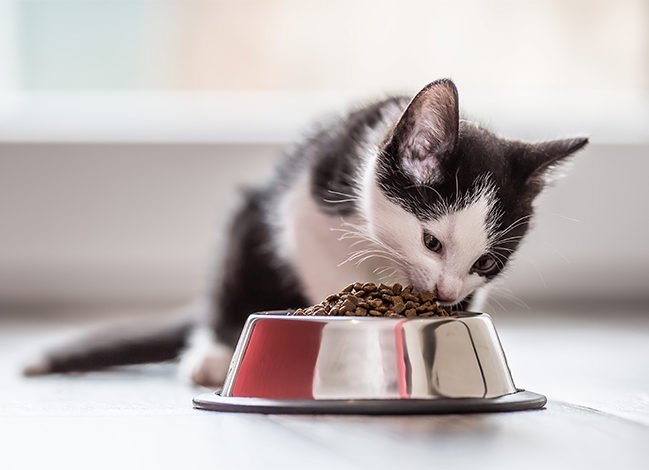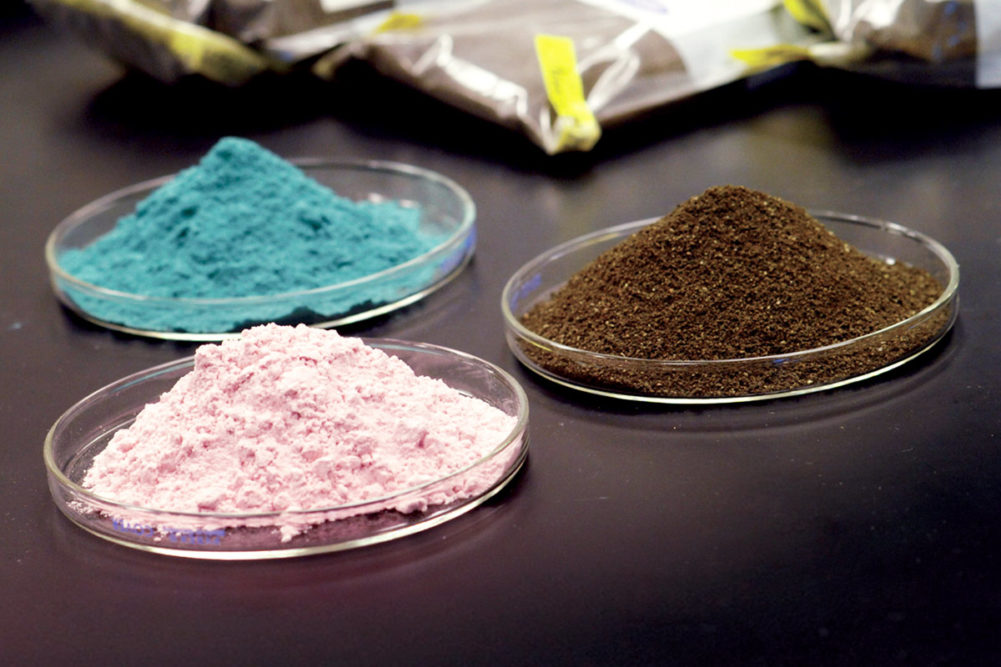This article was published in the December 2019 issue of Pet Food Processing. Read it and other articles from this issue in our December digital edition.
Complete and balanced pet foods are the reason pet owners are able to feed their dogs and cats the same food day in and day out and see consistent results in their health and overall well-being. Although vitamins and minerals are micronutrients, meaning they are supplemented in companion animal diets in small quantities, they play leading roles in a wide range of metabolic and immune functions that keep pets healthy and happy.
Pet food manufacturers must understand the form, source and concentration needed for each vitamin and mineral to optimize bioefficacy of the nutrient and stability of the overall product.
“Vitamins and minerals in companion animal diets must be formulated appropriately as too much can cause toxicity and too little can lead to deficiencies,” says Stephanie Clark, Ph.D., CVT, manager of research and development at BSM Clinical Nutrition Services, Mandeville, Louisiana.
Trace minerals
Macrominerals, including calcium, phosphorus, magnesium, sodium and potassium, are what Dana Tomlinson, Ph.D., research nutritionist and global species leader, at Zinpro Performance Minerals, Eden Prairie, Minnesota, describes as the “big picture minerals.” These are the building blocks that contribute to developing bone, muscle and tissue, as well as maintaining energy levels. Trace minerals, on the other hand, are required in milligrams and act as the glue that keep a pet’s metabolism and immune system functioning properly.
“Trace minerals are like the key to a car or truck. They’re not a very big part of it, but it’s very difficult to make a car go without the key,” says Dana Tomlinson, Ph.D., Zinpro Performance Minerals.
Trace minerals are supplemented in companion animal diets in small amounts and contribute to several metabolic and immune functions, including energy metabolism, skin and coat quality, growth and development, reproductive performance, joint and bone integrity, paw pad condition and overall health and wellness.
“Trace minerals are like the key to a car or truck,” Tomlinson explains. “They’re not a very big part of it, but it’s very difficult to make a car go without the key.”
Zinc, for instance plays an important role in more than 300 enzyme systems and is essential for more than 3,000 protein systems in the body.
There are two major forms of minerals: inorganic and organic. Inorganic minerals tend to be higher in concentration than organic minerals and cheaper to purchase. Organic minerals, however, are often more expensive but more bioavailable to an animal.
“Historically, there’s always a combination of inorganic versus organic,” says Brent Kirn, companion animal account manager, North America at Zinpro. “The rule was typically 25 to 30% of your mineral needs to come from organic.”

“As we begin to formulate closer to what their natural diet is, what we find is that 100% organic is actually closer to what their natural diet would be,” Tomlinson says. “So, what we have done or continue to do [use of inorganics] from a cost standpoint is not necessarily in the best interest from a bioefficacy standpoint for the companion animal.”
Organic minerals tend to be less reactive than inorganic sources through processing and shelf life, Kirn says, because they are tightly bonded to a carbon ligand.
Strong bonds with a carbon molecule offer a few benefits.
“These additional bonds improve stability and help keep the mineral bound to its preformed ligand longer, preserving its availability to be absorbed if needed,” says Trevor Faber, Ph.D., companion animal nutritionist for Trouw Nutrition, Highland, Illinois.
Absorption is the key to this equation, which is why both the form and source of a mineral are very important. A nutrient is essentially useless to an animal if it is unable to be absorbed, causing deficiency and resulting in declines in immune, enzyme and reproductive functions, according to Zinpro.
“If not properly balanced, one nutrient can limit the absorption of another, such as iron and copper,” Faber says. “Nutritionists need to have an understanding of nutrient interactions and ensure their formulations provide the best opportunity for nutritional success.”
Vitamins
Vitamins aid in everything from vision to blood coagulation, providing antioxidant functions and assisting with the absorption of other nutrients such as minerals. They come in two major forms: fat-soluble and water-soluble.
Fat-soluble vitamins, which include vitamins A, D, E and K, are stored in the body already, which means supplementation must be done carefully over a period of time as not to cause toxicity in the animal, Clark says.
Water-soluble vitamins include C and B-complex and require consistent replenishment because they are not readily stored in the body. Vitamin C is not essential for dog and cat diets, according to Clark. However, B-complex vitamins, including B-12, B2 or riboflavin, niacin, pantothenic acid, B1 or thiamine, B6 or pyridoxine, and biotin, are essential for metabolism, nervous system function, cell integrity and maintaining a healthy skin and coat.

“Fat- and water-soluble vitamins differ in how they are absorbed in the digestive tract,” Faber explains. “Fat-soluble vitamins are absorbed with dietary lipids, while water-soluble vitamins are absorbed via passive diffusion and sometimes active transport.”
He adds that fat-soluble vitamins have antioxidant and immunomodulatory effects in companion animals, whereas water-soluble vitamins are more associated with nutrient metabolism.
There are some processing challenges related to vitamins that are dependent on moisture, temperature and time, Faber says. For example, thiamin can be destroyed in a retort cooking process by as much as 90%, according to Faber.
In this regard, it is important for pet food formulators to consider the processing methods and target the shelf-life of the product.
“Most vitamins are not highly heat stable and can be degraded during processing,” Clark says. “Additionally, shelf life is only as good as the nutrient survival property.”
“Synthetic vitamins have a high availability to the animal, which helps ensure the animal can meet its needs, assuming proper supplementation,” says Trevor Faber, Ph.D., Trouw Nutrition.
As with minerals, some forms of vitamins are more bioavailable to companion animals than others.
“Synthetic vitamins have a high availability to the animal, which helps ensure the animal can meet its needs, assuming proper supplementation,” Faber says.
Vitamins must be supplemented in precise amounts as to not cause toxicity, which is perhaps the most consequential aspect of these micronutrients.
“Vitamin analysis is highly variable and sensitive to numerous factors. Vitamin data can be very misleading, which can affect vitamin fortification amounts,” Faber says.
Vitamin D is a prime example of this.
“A complete diet can have a substantial amount of natural, inherent vitamin D, but the stability, amount and potential for absorption is variable. This makes determining the amount of supplemental vitamin D in the diet very challenging,” Faber says. “This is why quality assurance is so important to ensure the diets have the correct amount of vitamins in them so they meet the nutritional requirements for the animal,” he advises.
For young and old
While proper formulation of vitamins and minerals is essential at all stages of a pet’s life, dogs and cats require different forms and sources in early development and old age.
“During each life-stage, the body is focusing on different metabolic functions, which requires varying amounts of nutrients,” Faber says.
Getting the forms, sources and concentrations of vitamins and minerals right plays a critical role in establishing a foundation of health and wellness in developing animals.
“If we look at, let’s say puppies or kittens, we’re building new muscle, we’re building new bone, and more importantly we’re building bone and joint matrices that we hope have good integrity to maintain the health and well-being of that animal for many years,” Tomlinson says.

“How we formulate those diets with the chelates in our young, rapidly developing animals really kind of sets the stage for the health and well-being of that animal in those very early points in life,” Tomlinson says.
Diets for geriatric, or senior, animals require careful formulation when it comes to trace minerals. If they have an insufficient supply, their bodies will begin to break down tissues and muscle to release stored nutrients and use them for more immediate functions. Additionally, older animals have a reduced absorption efficiency, so it’s important that trace mineral sources used in senior diets are readily available.
Kirn explains this with an analogy, saying, “If you put diesel fuel into a Porsche, it’s going to run, but not for long. You have to match the fuel types — the nutrients — to the particular animal and their demand.”
Having bioavailable supplies of zinc, manganese, copper, selenium, iodine and iron can help older animals manage the challenges, such as oxidative, environmental or physiological stress, that accompany old age.
“If not properly balanced, one nutrient can limit the absorption of another, such as iron and copper,” says Trevor Faber, Ph.D., Trouw Nutrition.
There are also life-stage discrepancies in vitamin supplementation for companion animal diets. For example, puppies and kittens need increased levels of vitamin D in their diet to aid in calcium and phosphorus absorption during early development. In senior pets, increased levels of vitamins E and C can have antioxidant benefits and help maintain cognitive function, Clark says. Faber adds that vitamins E and C, as well as the trace mineral selenium, can be supplemented to support immune system development in puppy diets.
Formulating with care
Careful consideration and a thorough understanding of vitamin and mineral matrices in companion animals are needed to formulate a completely balanced product and avoid deficiencies or toxicities.
As in many cases, consulting with experts is a good way for pet food processors to make sure they are utilizing the most bioavailable forms, sources and correct ratios of vitamins and minerals to guarantee proper pet nutrition down to a microscopic level.
Read more about product development, ingredients and formulation.




